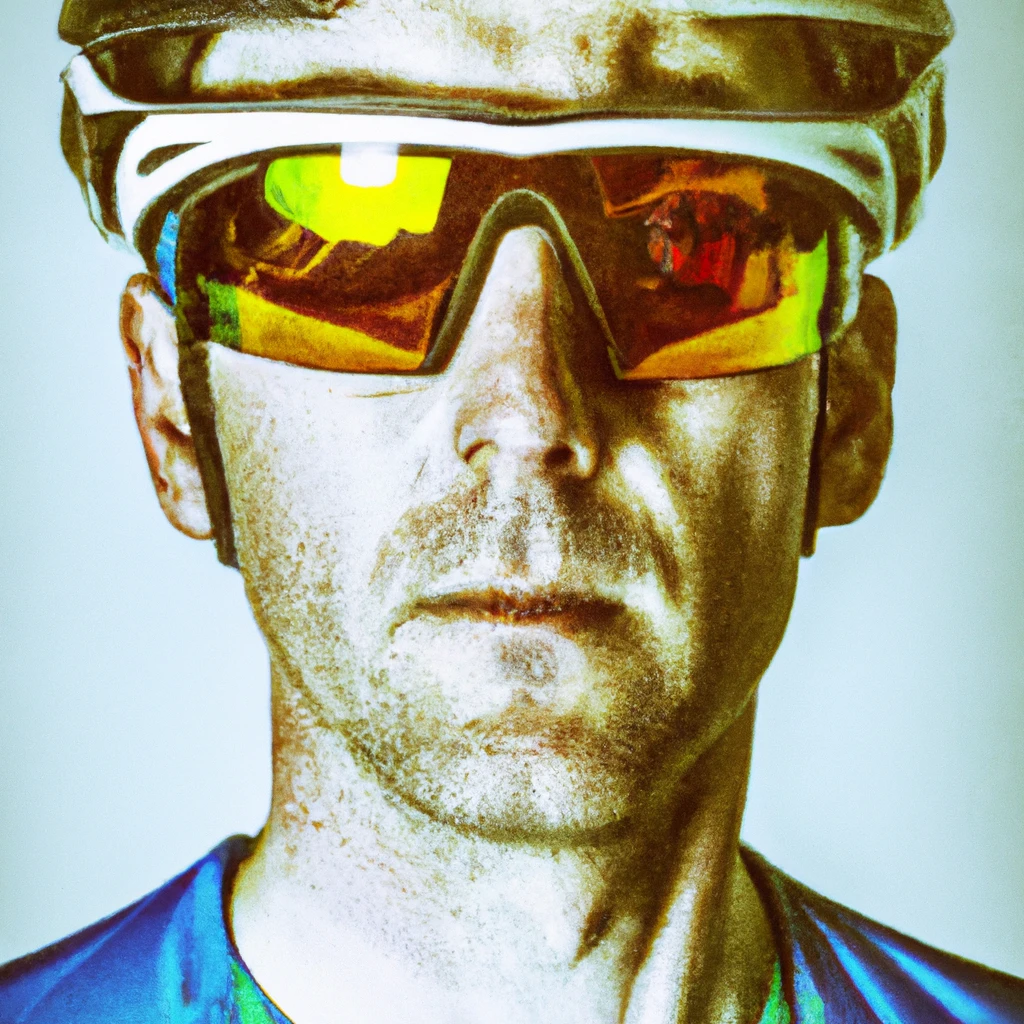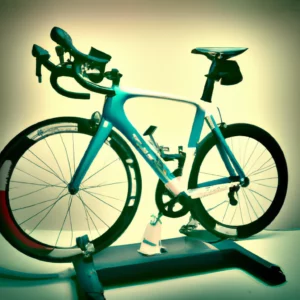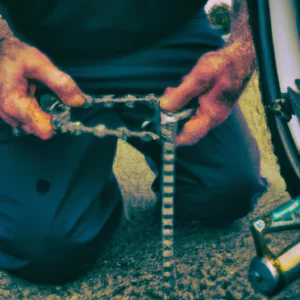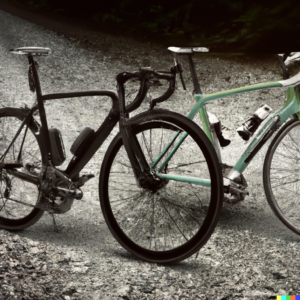The Importance of Cycling Glasses: Protecting Your Eyes and Enhancing Your Performance
As someone who has spent a fair share of my time on two wheels, I can tell you that a reliable pair of cycling glasses is an absolute must for any serious cyclist. Good cycling glasses go far beyond merely enhancing your overall appearance — they are a necessary element that contributes to both safety and performance.
Safety, you ask? Indeed! Cycling glasses are designed to protect the eyes from UV rays, wind, dust, and debris. As you glide down the road or trail, several risks could sabotage your eyes’ comfort and even vision itself. Think about airborne dust particles, minute insects, and even worse, gravel or debris flung upwards by fast-moving vehicles. A gust of wind could also bring tears to your eyes, negatively affecting your ability to see clearly. Cycling sunglasses work to combat these issues, offering that much-needed shield for your eyes. And let’s not forget UV protection — a vital aspect I’ll delve into further in a later section.
But what about performance enhancement? Believe it or not, the right cycling glasses can modestly contribute to improved cycling performance. How? Well, it’s all about sharp, unobstructed vision. By reducing glare and enhancing clarity, especially in varying light conditions, you’re able to navigate the route better and make split-second decisions. Also, certain lens colors can improve contrast, making it easier to discern road surfaces and potential hazards.
My personal experience has taught me that with the right pair of cycling glasses, my rides become significantly more comfortable. The peace of mind they provide, knowing that my eyes are protected, allows me to concentrate more on the road ahead. So, without further ado, let’s delve into some critical considerations you should keep in mind when you decide to purchase cycling glasses.
Understanding Different Lens Types: Clear, Tinted, and Polarized
When it comes to lens types, you’ll encounter a whole spectrum of options – clear, tinted, or polarized. The choice, ultimately, depends on your cycling conditions and personal preferences. Let’s delve into each of these to give you a clear view, both literally and figuratively!
Clear lenses:
Unleash the night owl in you! Clear lenses are perfect for those who relish the exhilaration of cycling after dusk or during conditions with low light levels. Typically, they don’t alter color perception and offer the basic level of protection against debris and unfortunate flying insects. So, if you’re like me, fond of moonlit rides, clear lenses should be your go-to choice.
Tinted lenses:
Riding in bright daylight can strain your eyes, and this is where tinted lenses demonstrate their worth. They reduce the intensity of light and can enhance contrast, making it easier for you to spot possible road obstacles. You’ll find a variety of color options, each serving a specific purpose, which we’ll explore later in the lens color consideration section.
Polarized lenses:
If glare gives you the creeps, polarized lenses are your savior. They block out horizontal light waves that cause glare, thus preventing the distracting and even dangerous light reflections off wet roads or incoming vehicles. However, there’s a small caveat. Polarized lenses may make LCD or LED screens challenging to see—a point to consider if your bike has an electronic display.
Ultimately, the choice of lens type is highly personal and dependent on your precise cycling conditions. When I initially started cycling, I shuffled through a couple of lens options until I found the perfect one that suits my needs. I suggest you do the same. Don’t hesitate to try different types and see which feels best for you – after all, achieving the ultimate cycling performance is as much about comfort as it is about technical features.
In the end, it’s essential to remember that our eyes, like the rest of our body, require care and protection. Cycling glasses play a significant role in that, even if the lens is as clear as the open road!
Finding the Right Fit: Frame Styles and Sizes
Ever found yourself in the middle of an exhilarating cycling journey only to have your vision obstructed by an ill-fitted pair of cycling glasses? Well, I speak from personal experience- it can be both frustrating and hazardous. Hence, the importance of choosing cycling glasses with the optimal frame style and size cannot be overstated.
The world of cycling glasses offers an array of frame styles to choose from. No style is better than the other; it’s all about what works for you. From half frame and full frame to frameless designs, each lends a unique set of characteristics.
- A half-frame comes with a semi-rimless design that often yields lightweight comfort. This design can accommodate more substantial, wrap-around lenses, thus offering a more extensive field of vision.
- The full-frame style typically provides robust durability and better protection from debris.
- Meanwhile, the frameless styles are revered for their super-lightweight feel and unimpaired peripheral vision.
It’s essential to try on different styles and see what sits best on your face and fits your needs. Remember, comfort, protection and clear vision are the trinity you are aiming for.
Now, what about size?
In my years of cycling, I’ve realized that a snug fit is crucial in ensuring the glasses stay put during the vigorous motion of cycling. But remember, a “snug fit” doesn’t mean it should be uncomfortably tight. Here’s where the sizes come in.
The Importance of Choosing the Right Size
Too tight, and you might end up with unnecessary pressure around your temple and nose bridge. Too loose, and you risk your glasses bouncing off. Just like goldilocks, it’s a matter of finding the glasses that are ‘just right’.
A proper fit doesn’t only secure its place on your face but also assures that the air circulation around the lenses is adequate to prevent fogging. Hence, it’s a good idea to understand the size specifications offered by manufacturers. Most will specify lens width, bridge width and temple length. Some manufacturers even provide a ‘fit guide’ on their website to help you make the right choice.
Assessing the fit may be tough when buying online, but many retailers have helpful return policies if the maiden trial doesn’t quite meet your expectations.
It’s a trial and error process, and it’s okay if you don’t get it right the first time. But remember, finding the perfect pair of glasses is more than a style statement – it’s an investment for your safety and performance.
My Personal Experience: A Story Worth Sharing
I was in the middle of a cycling tour in the outback, battered by harsh winds, when my glasses got dislodged from my face. I learned my lesson the hard way. But believe me, struggling to adjust your glasses while managing balance and speed isn’t something you want to experience. That day, I realized the significance of a well-fitted pair of cycling glasses. I vowed to prioritize fit over style in my future purchases. Thankfully, I found my perfect pair with the right blend of style and fit. Now, I ride with peace of mind, knowing I have optimal protection with perfect vision.
In summary, remember to consider frame style, lens type, secure fit, and comfort as pivotal factors when buying cycling glasses. Ultimately, it’s not just about narrowing your search based on budget, but ensuring the glasses cater to your needs while enhancing your cycling experience.
Choosing the Right Lens Material: Polycarbonate vs. Glass
When it comes to the debate between polycarbonate lens and glass lens, my personal expertise and extensive research favor the former. Let me explain why.
Polycarbonate lenses, a thermoplastic material that’s lighter and significantly more impact-resistant than glass, rose to popularity in the cycling world for good reasons. As a passionate cyclist, I can vouch that nothing matters more than safety and comfort while on the road.
With polycarbonate lenses, not only do you get excellent visual clarity and contrast, but they’re also practically shatterproof. Imagine cruising downhill at high speed, when a small rock or a bug hits your glasses. You don’t want a glass lens to shatter, right? With polycarbonate, that worry is off the table.
On the other hand, glass lenses have their merits too. They are highly scratch-resistant, and they provide superior optical clarity. Yet, they fall short in terms of safety and comfort – they’re heavier and can break upon impact.
| Polycarbonate Lenses | Glass Lenses | |
|---|---|---|
| Impact Resistance | High | Low |
| Weight | Light | Heavy |
| Scratch Resistance | Medium | High |
| Optical Clarity | High | Superior |
Consider the above elements deeply before making a choice. I believe the safety and comfort factors make polycarbonate lenses a winner for most cyclists. You and your eyes deserve to be protected. When I made the switch from glass to polycarbonate, it felt as if a weight was lifted from my nose. What’s your preference and why? I’d suggest trying both and feeling the difference yourself before making a choice.
From My Lens: Making the Switch
I remember clearly, my conversation with a seasoned cyclist at a café by the cycle route, who passionately advocated for the polycarbonate lens. He asserted that his switch to polycarbonate glasses had significantly improved his cycling experience. This made me curious, and after a bit of homework, I decided to make the switch myself. It was a decision I still celebrate to date. My polycarbonate lenses have effectively addressed the concerns of weight, safety, and comfort, without compromising much on the optical quality.
To sum it up, pick the lens material that suits your specific needs and usage. Remember, while cycling, your glasses are more than just a fashion accessory, they are a tool that aids your performance and ensures safety. Happy cycling!
Anti-Fog and Ventilation Features: Keeping Your Vision Clear
As an avid cyclist, I can’t stress enough the importance of a clear vision. Trust me, having foggy lenses while descending from a steep hill at full speed is not something you’d wish for. The key features that can save you from such situations are the anti-fog and ventilation systems of cycling glasses.
Anti-fog coating is a chemical treatment applied to the lenses that prevents condensation, by minimizing the surface tension, stopping the water droplets from sticking to the lens and hindering your vision. Think about it – the fewer distractions you have while cycling, the better you can focus on the path, right?
Now, hold on, what’s up with ventilation features? Let’s dive in.
A Breath of Fresh Air: Ventilation Features
Ventilation is another ace up the sleeve of quality cycling glasses. It involves designing the frame and lenses in a way that facilitates good airflow around your eyes. This helps in reducing the potential for condensation and fogging up of your lenses. Imagine having a personal little cool breeze constantly keeping things fresh and your vision unobstructed! However, striking the right balance is crucial. Too little ventilation may not effectively prevent fogging, while too much could lead to your eyes drying out.
Let me share my own example. I once purchased a pair of cycling glasses with poor ventilation. During a long ride, I noticed the pinch. Despite an anti-fog layer, my lenses fogged up due to lack of proper airflow. After this incident, I exclusively went for glasses with optimal ventilation. So, don’t underestimate this feature!
In conclusion, both anti-fog and ventilation provide a solution to the same problem but from different angles. Remember these two critical elements to ensure a clear vision during your biking escapades.
Next, we shall discuss the protective ability of cycling glasses against harmful UV rays, another reason to adore these essential biking companions!
Impact Resistance: Protecting Your Eyes from Debris and Accidents
When it comes to the nitty-gritty world of cycling, safety is paramount. It is here that impact resistance enters the equation, and trust me, it’s not a factor you want to gloss over.
What do I mean by impact resistance? It refers to the cycling glasses’ ability to withstand high-speed impacts from road debris, branches, and unfortunately, even the occasional crash. Ever ridden along a trail and got smacked by a rogue pebble kicked up by the rider in front? I have, and let me tell you, it’s moments like this that the impact resistance of your glasses truly shines.
A good pair of cycling glasses should have high impact resistance. Weathering those high-speed lashes from grit and grime without a scratch or, God forbid, shattering. Cycling glasses are quite literally your first line of defense.
The Eye of the Storm: How High Impact Resistance Saved My Ride
A few years back, while I was coasting downhill on a gravel road, a rather large, unfortunately timed stone bounced off the road directly toward my face. The stone impacted squarely with my cycling glasses. The good news? My glasses were none the worse for wear, and aside from a momentary shock to the system, neither was I. That’s the peace of mind high impact resistance provides.
Testing the Waters: Impact Resistance Standards
The smart cyclist might ask – how is impact resistance measured? Well, scientific types came up with a grading system, primarily the ANSI Z87+ standard. It means the glasses can withstand impact from a 6.35 mm or 1/4 inch steel ball at the speed of 150 feet per second and also a pointed projectile weighing 500 grams dropped from a height of just over four feet. If your pair can handle that, it can handle anything the road throws up.
So, remember to consult these standards while picking your pair. Here’s a handy table recapping the key takeaways:
| Features | Benefits |
|---|---|
| High Impact Resistance | Protection against debris, stones and in crash scenarios |
| Compliant with ANSI Z87+ | Ensures that the glasses can withstand high-speed impacts |
Whether you’re a daily commuter or a cross-country adventurer, don’t compromise
In conclusion, choosing the right cycling glasses is an essential part of gearing up for your ride. This is equally important whether you’re a daily commuter or a cross-country adventurer. Remember, your vision greatly influences your performance and safety on the road. So, always consider the lens type, frame fit, lens material, anti-fog and ventilation features, and impact resistance when making your choice. My experiences echo the need for paying attention to these considerations. Ultimately, investing in quality cycling glasses can significantly enhance your cycling experience, protecting your eyes and potentially improving your performance. Most importantly, share the knowledge since every cyclist’s vision is as critical as their two wheels.





